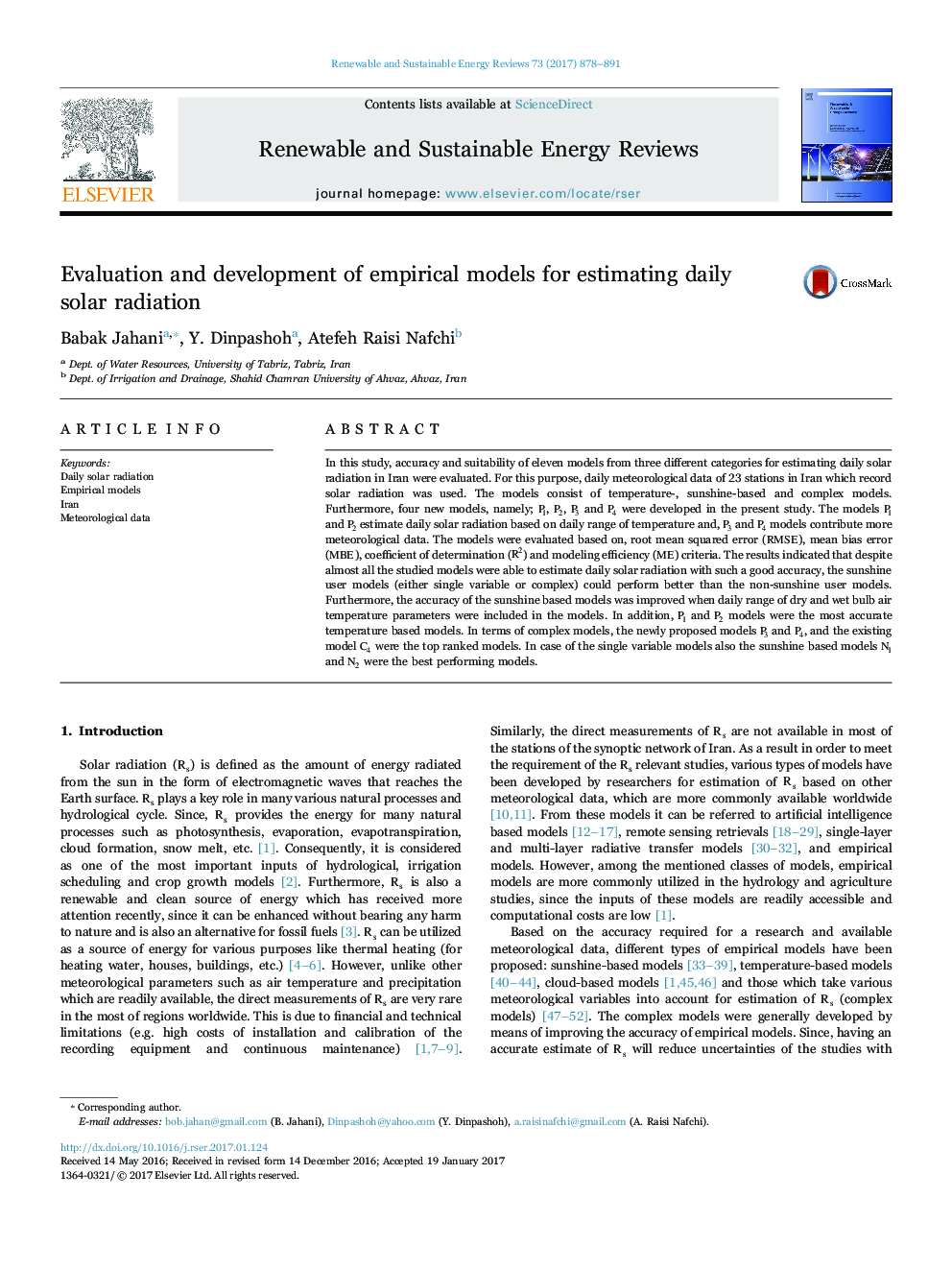| Article ID | Journal | Published Year | Pages | File Type |
|---|---|---|---|---|
| 5482307 | Renewable and Sustainable Energy Reviews | 2017 | 14 Pages |
Abstract
In this study, accuracy and suitability of eleven models from three different categories for estimating daily solar radiation in Iran were evaluated. For this purpose, daily meteorological data of 23 stations in Iran which record solar radiation was used. The models consist of temperature-, sunshine-based and complex models. Furthermore, four new models, namely; P1, P2, P3 and P4 were developed in the present study. The models P1 and P2 estimate daily solar radiation based on daily range of temperature and, P3 and P4 models contribute more meteorological data. The models were evaluated based on, root mean squared error (RMSE), mean bias error (MBE), coefficient of determination (R2) and modeling efficiency (ME) criteria. The results indicated that despite almost all the studied models were able to estimate daily solar radiation with such a good accuracy, the sunshine user models (either single variable or complex) could perform better than the non-sunshine user models. Furthermore, the accuracy of the sunshine based models was improved when daily range of dry and wet bulb air temperature parameters were included in the models. In addition, P1 and P2 models were the most accurate temperature based models. In terms of complex models, the newly proposed models P3 and P4, and the existing model C4 were the top ranked models. In case of the single variable models also the sunshine based models N1 and N2 were the best performing models.
Related Topics
Physical Sciences and Engineering
Energy
Renewable Energy, Sustainability and the Environment
Authors
Babak Jahani, Y. Dinpashoh, Atefeh Raisi Nafchi,
